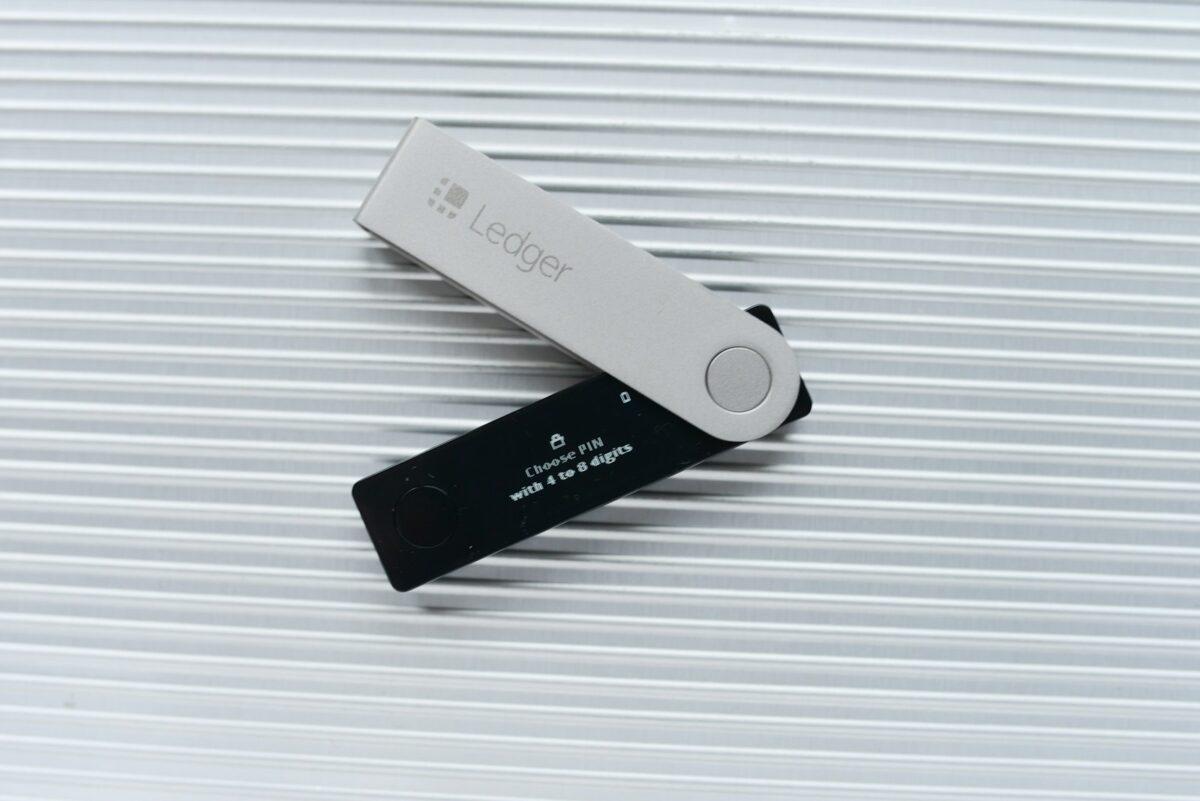
Crypto gifting basics

Transferring digital assets to friends or family requires clear understanding of the procedural and legal framework. Establishing recipient wallets, confirming addresses, and verifying transaction details are critical first steps to avoid irreversible errors. Each transfer should be documented to maintain a transparent record, particularly when inter-family exchanges involve substantial value.
Legal implications must be carefully evaluated before initiating transfers. Different jurisdictions apply varying rules regarding ownership rights, gifting thresholds, and required disclosures. Understanding these regulations prevents unintended violations and ensures compliance with anti-money laundering standards. Consulting legal experts familiar with blockchain-related property laws is advisable for complex cases.
Tax treatment represents a significant factor in planning asset gifts. Gift taxes, capital gains considerations, and reporting obligations vary widely depending on location and asset type. Recipients may face tax liabilities upon receiving or later disposing of the assets. Accurate records of fair market value at the time of transfer support correct tax filings and reduce audit risks.
Additional practical points include network fees, timing of transactions, and security measures. Network congestion can delay transfers; therefore, scheduling during lower activity periods improves success rates. Employing multi-signature wallets enhances security for valuable transfers within close-knit groups like families or trusted friends. Awareness of these operational details complements legal and fiscal strategies for successful gift exchanges involving digital valuables.
Understanding the Fundamentals of Digital Asset Transfers for Family and Friends
Initiating a transfer of digital tokens to family or friends requires precise knowledge of wallet management and legal considerations. Recipients must have access to compatible wallets capable of receiving specific assets, ensuring seamless transaction verification on the blockchain. Establishing secure private key control is paramount to prevent unauthorized access during this process.
Tax implications play a significant role in these asset transfers. Depending on jurisdiction, gifting may trigger taxable events for either the sender or recipient. It is essential to consult local regulations regarding gift thresholds, reporting requirements, and potential capital gains liabilities arising from asset appreciation before executing any transfer.
Technical Workflow of Digital Token Transfers
The procedure begins with selecting an appropriate wallet that supports the intended token standard (e.g., ERC-20, BEP-20). The sender initiates a transaction by specifying the recipient’s public address and desired amount. Network fees must be accounted for to ensure timely confirmation by miners or validators. Once broadcasted, the transaction status can be tracked via blockchain explorers, providing transparent verification.
For families unfamiliar with wallet setup, creating custodial wallets through reputable platforms can simplify the reception process while maintaining adequate security measures. Educational efforts surrounding seed phrases and multi-factor authentication strengthen defenses against common vulnerabilities encountered during peer-to-peer transfers.
Legal frameworks governing these transfers vary internationally but commonly include anti-money laundering (AML) obligations and reporting standards aimed at preserving compliance. Some jurisdictions require documentation when transferring digital assets exceeding specific values between individuals, emphasizing due diligence in record-keeping practices.
A comprehensive understanding of these factors equips senders and recipients alike to navigate asset exchanges confidently. Experimenting with small-value transactions initially can aid in grasping operational nuances before scaling amounts sent within family circles or among close acquaintances.
Choosing the right wallet
Selecting an appropriate wallet for transferring digital assets involves analyzing security protocols, compatibility with intended recipients such as family or friends, and understanding tax implications linked to asset movement. Hardware wallets offer robust protection through offline key storage, reducing exposure to hacking attempts during transfers. Conversely, software wallets provide convenience but require rigorous security measures like two-factor authentication to maintain asset integrity.
Legal aspects play a significant role in wallet choice. Different jurisdictions impose varying requirements on reporting transactions between individuals, which can affect compliance when sending assets to relatives or acquaintances. Ensuring that the wallet supports transparent transaction records aids in meeting regulatory obligations while minimizing risks related to unintentional tax evasion or misreporting.
Key technical attributes impacting selection
Compatibility stands at the forefront of wallet considerations; it must support the specific blockchain protocol of the transferred tokens. For example, Ethereum-based assets necessitate wallets compatible with ERC-20 standards. Additionally, multisignature functionality enhances security by requiring multiple approvals before transfer execution, beneficial when managing shared family holdings or collaborative gifting among friends.
- Security: Hardware vs software wallets and their respective attack vectors.
- User Experience: Intuitive interfaces reduce errors during transfer processes.
- Backup and Recovery: Seed phrases and encrypted backups safeguard access in case of device loss.
Examining tax implications further clarifies wallet choice. Some custodial platforms automatically generate annual statements detailing gains or losses realized during transfers, easing reporting burdens for users sending assets within their close circle. This contrasts with self-custody solutions where detailed record-keeping falls entirely on the user, increasing complexity especially in jurisdictions with stringent capital gains taxation rules.
The relationship between sender and recipient affects wallet choice dynamics as well. Transfers intended for family members may prioritize simplicity and legal clarity to avoid disputes or misunderstandings about ownership rights post-transfer. In contrast, gifts sent to friends might emphasize privacy features available in certain wallets that mask transaction details on public ledgers without compromising compliance.
A practical experimental approach involves testing several wallet options using small-value transfers before committing higher amounts. Monitor confirmation times, ease of backup restoration, and accuracy of generated transaction history relevant for tax documentation. This methodical investigation builds confidence and reveals unforeseen challenges linked to specific wallet architectures or blockchain networks involved in asset transmission.
Buying Cryptocurrency for Gifts
When purchasing digital assets as presents for friends or family, the primary step involves selecting a secure and compatible wallet for the recipient. Hardware wallets, such as Ledger or Trezor, offer robust security by storing private keys offline, reducing exposure to hacking risks. Alternatively, software wallets like MetaMask provide user-friendly interfaces but require additional caution regarding phishing attacks. The choice of wallet directly impacts how easily the transfer of tokens can be executed and accessed by the beneficiary.
Legal aspects surrounding asset transfers must be thoroughly examined before proceeding. Jurisdictions differ widely in their regulations concerning digital asset transfers, especially when done as gifts. Understanding local laws is essential to ensure compliance with anti-money laundering (AML) policies and to clarify whether gifting triggers any reporting obligations. Additionally, certain countries impose limits on gift amounts exempt from taxation, requiring careful documentation of the transaction.
Technical Process and Transfer Protocols
Executing a transfer begins with confirming that the recipient’s wallet supports the specific blockchain token intended as a present. For instance, sending Ethereum-based tokens requires an Ethereum-compatible address; otherwise, funds risk being lost irretrievably. A recommended experimental approach involves initially transferring a small test amount to verify address validity and network fees associated with the transaction before sending larger sums.
Tax implications frequently influence decisions around gifting digital assets within families or social circles. Many tax authorities treat gifted cryptocurrencies as property transfers, which may trigger capital gains calculations based on acquisition cost and market value at transfer time. Documenting these values meticulously helps recipients manage future tax liabilities upon disposal. Exploring case studies where improper reporting led to penalties highlights the importance of maintaining transparent records throughout gifting operations.
Creating secure gift wallets
To establish a secure wallet for transferring digital assets to friends or family, prioritize hardware solutions or well-audited software wallets with multi-signature capabilities. Hardware wallets provide isolated key storage, reducing exposure to malware or phishing attacks during the transfer process. For gifting purposes, generating a dedicated wallet that is clean of prior transactions minimizes traceability risks and enhances privacy for recipients.
Ensure the recovery phrase or private keys are stored offline using physical methods such as engraved metal plates or secure paper backups, protected from environmental damage. Sharing this sensitive information securely with beneficiaries involves encrypted communication channels or in-person handover to prevent interception. This step addresses one of the primary vulnerabilities in wallet creation for transfers intended as presents.
Technical considerations and tax implications
The construction of wallets designed for asset transfer entails understanding both blockchain mechanics and jurisdictional regulatory frameworks. Different countries impose distinct reporting requirements on asset transfers exceeding specified thresholds, which can trigger tax events for either the sender or recipient. Maintaining detailed transaction records within wallets aids in compliance verification and simplifies future audits.
From a technical standpoint, selecting blockchains with low transaction fees and fast confirmation times improves user experience during gifting operations. Layer-2 solutions or sidechains can be integrated into wallet designs to optimize cost-efficiency while preserving security guarantees inherent in mainnet settlements. Experimenting with these configurations offers insights into balancing convenience against decentralization principles.
- Multi-signature wallets: Require multiple approvals before any transfer occurs, adding an extra layer of security when gifting valuable assets to family members.
- Time-lock features: Enable delayed access to funds, useful in scenarios where gifts become accessible after a predetermined date.
- Cold storage integration: Allows long-term holding without constant network exposure, reducing attack vectors during idle periods before transfer.
The design of gift-specific wallets also benefits from incorporating user-friendly interfaces tailored for non-expert recipients. Simplified address formats and clear transaction tracking reduce errors during acceptance by friends unfamiliar with blockchain intricacies. Case studies demonstrate that educational onboarding embedded within wallet apps significantly decreases failed transfers and lost assets.
Evaluating real-world examples where improper private key management led to irreversible loss highlights the importance of rigorous key custody protocols. Encouraging experimental setups–such as creating test wallets on public testnets–helps users gain confidence in handling transfers safely before moving actual funds intended as gifts. This methodical approach fosters deeper understanding and mitigates operational risks associated with asset gifting via blockchain networks.
Transferring Crypto Safely
When transferring cryptocurrency assets to family or friends, prioritizing secure wallet management is indispensable. The choice between hardware wallets, software wallets, or custodial services directly influences the safety of the transaction. Hardware wallets offer offline key storage, minimizing exposure to online threats during the transfer process. Conversely, software wallets require stringent security measures such as multi-factor authentication and regular updates to prevent unauthorized access.
Legal implications must be carefully examined before initiating any transfer. Jurisdictions differ in their regulations regarding asset transfers and taxation on gifts or inheritance. For instance, some countries impose gift taxes that activate upon transfer exceeding specific thresholds. Understanding these legal frameworks protects both sender and recipient from unexpected liabilities while ensuring compliance with reporting requirements.
Technical and Practical Considerations for Transfers
Accurate address verification is fundamental to prevent irreversible loss of funds. Transferring tokens requires confirmation of the recipient’s public address with meticulous attention to detail; a single character error can result in permanent asset loss. Utilizing QR codes or encrypted communication channels enhances accuracy compared to manual input methods.
The blockchain network chosen for transfer affects speed and cost efficiency. Networks like Ethereum incur variable gas fees depending on congestion levels; alternatives such as Binance Smart Chain or Layer 2 solutions may reduce expenses significantly. Experimentation with small test transactions can reveal optimal parameters for timing and fee setting, fostering confidence before larger transfers.
- Wallet compatibility: Ensuring the recipient’s wallet supports the token type avoids inaccessible assets.
- Backup protocols: Encouraging recipients to securely back up private keys mitigates risks of losing access post-transfer.
- Transaction tracking: Using blockchain explorers enables real-time monitoring and verification of transfer status.
The interpersonal dynamics within families or social circles introduce unique layers of complexity when transferring digital assets. Clear communication about the nature of the asset, potential market volatility, and responsibility for custody fosters transparency. Educational efforts aimed at recipients unfamiliar with decentralized finance principles help prevent misunderstandings and promote prudent handling after receipt.
This multifaceted approach integrates technical precision with social awareness, enabling safer distribution of blockchain-based assets among trusted networks while respecting regulatory boundaries and individual preparedness.
Conclusion: Redeeming Transferred Cryptocurrency and Its Broader Implications
When redeeming transferred digital assets, the foremost action is to verify the wallet’s compatibility and confirm secure transfer protocols to avoid loss or misallocation. Understanding tax regulations related to received tokens is indispensable; recipients must recognize potential taxable events triggered by acceptance or liquidation of gifts from friends or family.
Technical nuances such as on-chain transaction identification, wallet address integrity, and smart contract conditions directly influence the seamless reception and subsequent use of gifted tokens. The interplay between transfer mechanisms and regulatory frameworks demands careful attention to mitigate unintended fiscal consequences.
Key Considerations for Recipients
- Wallet Verification: Confirm that the recipient’s wallet supports the token standard (e.g., ERC-20, BEP-20) to prevent asset incompatibility issues.
- Transfer Tracking: Utilize blockchain explorers to authenticate transaction completion and timestamp, which are critical for accurate tax reporting.
- Tax Implications: Different jurisdictions may classify received tokens as income at fair market value upon receipt or only upon disposal; consult localized guidelines accordingly.
- Gift Documentation: Maintaining records of sender identity and transfer details aids in future audits and clarifies provenance.
The future trajectory suggests increasing integration between wallets and automated tax-reporting tools, simplifying compliance for recipients. Emerging protocols may embed metadata that explicitly marks transfers as gifts, enhancing transparency between peers while reducing administrative burdens. Experimental implementations of decentralized identity verification could soon allow seamless recognition of asset origin within family or social networks.
This evolving ecosystem invites further investigation into programmable transfers capable of conditional redemption–such as time locks or multi-signature requirements–that can tailor gifting experiences with enhanced security. Encouraging exploration into these programmable features cultivates deeper understanding of blockchain’s capacity to redefine value exchange among close connections without sacrificing legal clarity.


